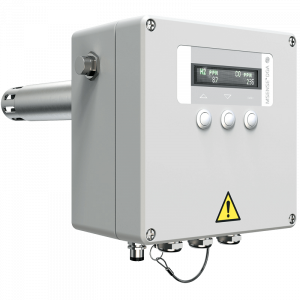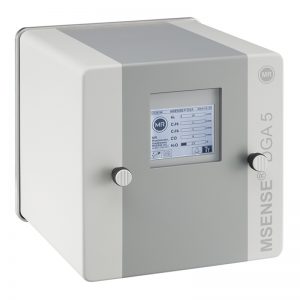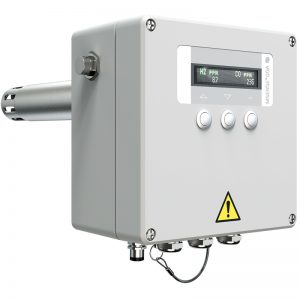They continually detect the gas concentration of the most important fault gases, hydrogen and carbon monoxide, as well as the moisture levels of the insulation medium. Depending on the device type, they also test a broad spectrum of gases, providing critical added security for transformers of particular strategic importance. The advantages of the DGA devices:
- Continuous concentration measurement of the most important fault gases hydrogen and carbon monoxide as well as the humidity in the insulation medium
- Testing of up to 8 gases, which enables fault classification in accordance with common standards (MSENSE DGA 5 and DGA 9)
- Convenient oil sampling connection with maximum security against pollution of the oil samples (MSENSE DGA 2 and DGA 3)
- Easy installation on the transformer by only one technician, even during operation
- Reduction of operating and maintenance costs: Thanks to NIR technology in combination with the patented headspace analysis, the use of carrier and calibration gases is unnecessary (MSENSE DGA 5 and DGA 9)
PTIMAL PROTECTION OF YOUR TRANSFORMER
The MSENSE® DGA devices provide accurate results at all times. This provides you with a reliable status diagnosis of your transformer at any time during operation. Much like a blood test in humans, the results of an online DGA of the transformer oil reveal developments inside the transformer. Faults trigger a warning or alarm at an early stage, before conventional protective devices disconnect the equipment from the mains.
INTERNATIONAL STANDARDS
According to international standards and experts in the field, hydrogen, carbon monoxide and moisture in the insulating oil of power transformers are the primary early indicators of potential thermal or electrical damage to the transformer (IEC 60475, IEC 60567, ASTM D 4057). In its “Guide for Transformer Maintenance” from 2011, for example, CIGRE pointed out that five of six frequently occurring problems can be detected quickly and affordably using dissolved gas analysis (DGA) during transformer operation. The MSENSE® DGA devices, optionally and in combination with ETOS®, provide fault classification on the basis of the following standards:
- Duval
- Doernenburg
- Rogers
- IEC 60599
- IEEE C57.104
Classification is made possible by determining the concentration of carbon dioxide, acetylene, ethylene, methane, ethane and oxygen.
INTUITIVE SOFTWARE
If desired, you can use the user-friendly MSET and MSET DGA parameterization software to change settings from the factory pre-sets. For example, you can adjust individual limit values and the number of measurements taken per day. Furthermore, based on the MSENSE® DGA 5 and MSENSE® DGA 9 device variants, MSET DGA offers the option of intensive monitoring and fault classification. Both solutions are included in the scope of delivery. MSET and MSET DGA present the measured data in a clear and understandable way and prepare trends graphically or exportable.


